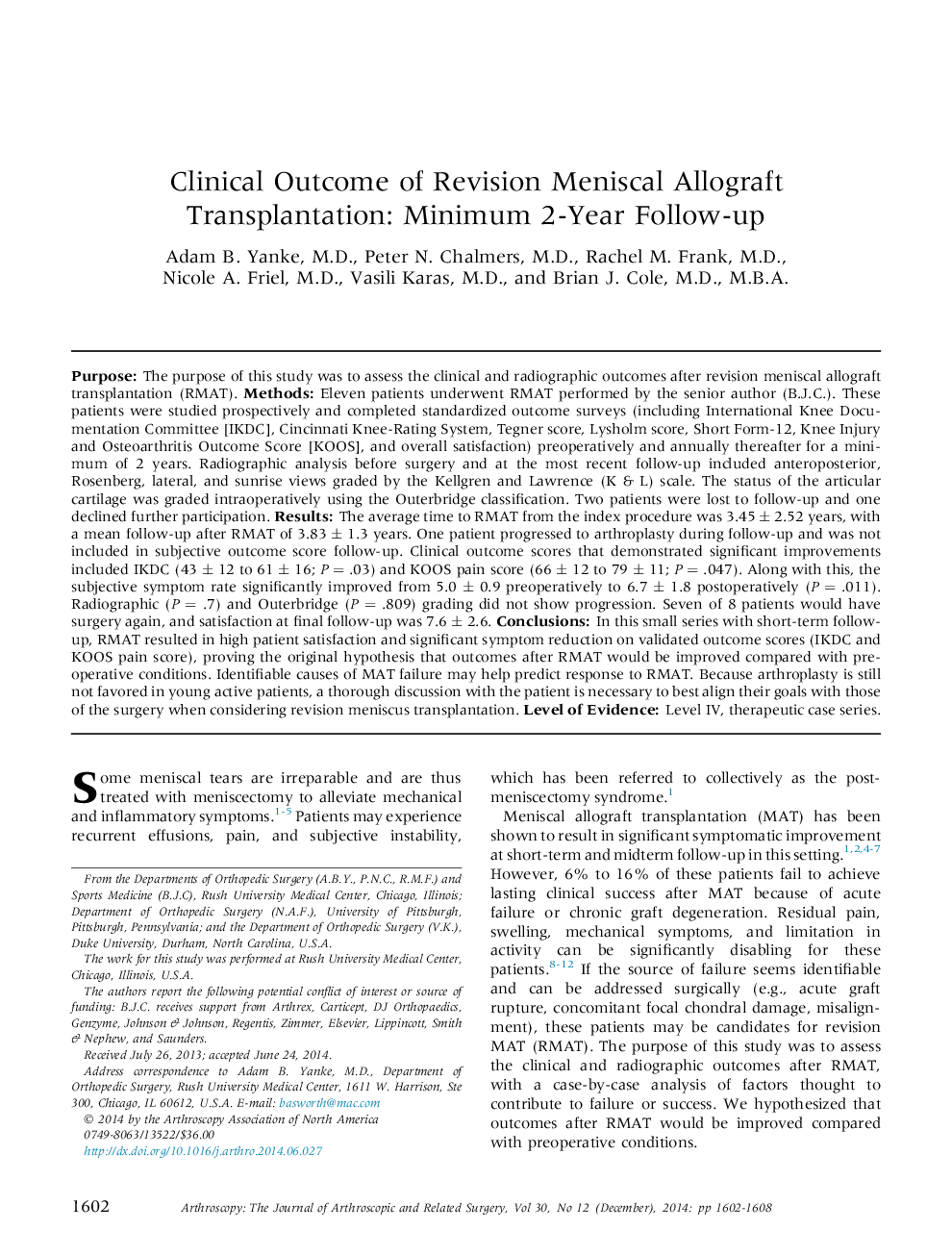| کد مقاله | کد نشریه | سال انتشار | مقاله انگلیسی | نسخه تمام متن |
|---|---|---|---|---|
| 4042397 | 1603489 | 2014 | 7 صفحه PDF | دانلود رایگان |
PurposeThe purpose of this study was to assess the clinical and radiographic outcomes after revision meniscal allograft transplantation (RMAT).MethodsEleven patients underwent RMAT performed by the senior author (B.J.C.). These patients were studied prospectively and completed standardized outcome surveys (including International Knee Documentation Committee [IKDC], Cincinnati Knee-Rating System, Tegner score, Lysholm score, Short Form-12, Knee Injury and Osteoarthritis Outcome Score [KOOS], and overall satisfaction) preoperatively and annually thereafter for a minimum of 2 years. Radiographic analysis before surgery and at the most recent follow-up included anteroposterior, Rosenberg, lateral, and sunrise views graded by the Kellgren and Lawrence (K & L) scale. The status of the articular cartilage was graded intraoperatively using the Outerbridge classification. Two patients were lost to follow-up and one declined further participation.ResultsThe average time to RMAT from the index procedure was 3.45 ± 2.52 years, with a mean follow-up after RMAT of 3.83 ± 1.3 years. One patient progressed to arthroplasty during follow-up and was not included in subjective outcome score follow-up. Clinical outcome scores that demonstrated significant improvements included IKDC (43 ± 12 to 61 ± 16; P = .03) and KOOS pain score (66 ± 12 to 79 ± 11; P = .047). Along with this, the subjective symptom rate significantly improved from 5.0 ± 0.9 preoperatively to 6.7 ± 1.8 postoperatively (P = .011). Radiographic (P = .7) and Outerbridge (P = .809) grading did not show progression. Seven of 8 patients would have surgery again, and satisfaction at final follow-up was 7.6 ± 2.6.ConclusionsIn this small series with short-term follow-up, RMAT resulted in high patient satisfaction and significant symptom reduction on validated outcome scores (IKDC and KOOS pain score), proving the original hypothesis that outcomes after RMAT would be improved compared with preoperative conditions. Identifiable causes of MAT failure may help predict response to RMAT. Because arthroplasty is still not favored in young active patients, a thorough discussion with the patient is necessary to best align their goals with those of the surgery when considering revision meniscus transplantation.Level of EvidenceLevel IV, therapeutic case series.
Journal: Arthroscopy: The Journal of Arthroscopic & Related Surgery - Volume 30, Issue 12, December 2014, Pages 1602–1608
